Neptune
Neptune is the eighth and farthest known planet from the Sun in the Solar System. It is a gas giant, similar to Uranus, and is often referred to as an "ice giant" due to its composition of water, ammonia, and methane ices.
Physical Characteristics
- Neptune is about 17 times the mass of Earth and is slightly more massive than its near-twin Uranus.
- It has a diameter of about 49,244 kilometers, making it the fourth-largest planet by diameter and the third-largest by mass.
- Neptune's atmosphere is made up mostly of hydrogen and helium, with a small amount of methane that gives the planet its blue color.
Orbit and Rotation
- Neptune has an average orbital distance of 4.5 billion kilometers from the Sun and takes about 165 Earth years to complete one orbit.
- It has a unique feature called the Great Dark Spot, a massive storm system similar to Jupiter's Great Red Spot.
- Neptune has 14 known moons, the largest of which is Triton, which is unique among moons in the solar system for its retrograde orbit and likely capture from the Kuiper Belt.
Exploration
- Neptune was first discovered in 1846 through mathematical calculations before it was actually observed through a telescope.
- The first and only spacecraft to visit Neptune was NASA's Voyager 2 in 1989, which provided the most detailed images and data of the planet to date.
Study Guide
- What is Neptune's composition primarily made of?
- How does Neptune's size compare to Earth?
- What causes Neptune's blue color?
- How long does it take Neptune to orbit the Sun?
- What is the name of Neptune's largest moon?
- When was Neptune first discovered?
- What spacecraft visited Neptune in 1989?
◂Science Worksheets and Study Guides Second Grade. The sun and earth
Study Guide The sun and earth
The sun and earth  Activity Lesson
Activity Lesson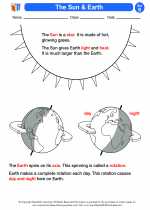 The Sun & Earth
The Sun & Earth  Worksheet/Answer key
Worksheet/Answer key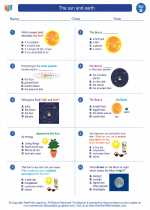 The sun and earth
The sun and earth  Worksheet/Answer key
Worksheet/Answer key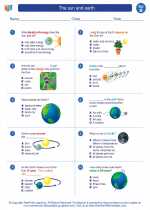 The sun and earth
The sun and earth  Worksheet/Answer key
Worksheet/Answer key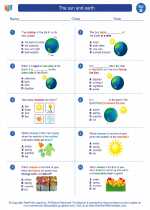 The sun and earth
The sun and earth  Worksheet/Answer key
Worksheet/Answer key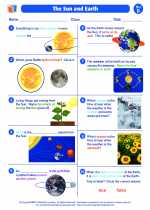 The Sun and Earth
The Sun and Earth  Vocabulary/Answer key
Vocabulary/Answer key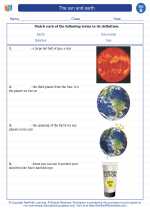 The sun and earth
The sun and earth 

 Activity Lesson
Activity Lesson
 Worksheet/Answer key
Worksheet/Answer key
 Worksheet/Answer key
Worksheet/Answer key
 Worksheet/Answer key
Worksheet/Answer key
 Worksheet/Answer key
Worksheet/Answer key
 Vocabulary/Answer key
Vocabulary/Answer key

The resources above cover the following skills:
Concepts of Earth Science: A student should understand and be able to apply the concepts, processes, theories, models, evidence, and systems of earth and space sciences. A student who meets the content standard should:
Develop an understanding of the cyclical changes controlled by energy from the sun and by Earth's position and motion in our solar system.